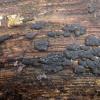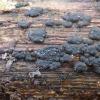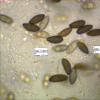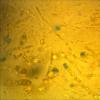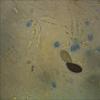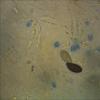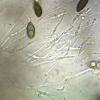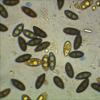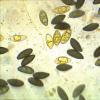
30-12-2025 16:44
Pascal DucosBonjour,Une anamorphe rose stipitée, très nombre

30-12-2025 17:14
 Bernard CLESSE
Bernard CLESSE
Bonjour à toutes et tous,Pourriez-vous aider Albe

29-12-2025 10:15
Hulda Caroline HolteHello, I found and collected this propoloid ascom

30-12-2025 09:04
Hello.A Pyrenomycete sprouting sparsely but very d

29-12-2025 17:44
Isabelle CharissouBonjour,J'aimerais savoir si d'autres personnes au

12-11-2021 00:03
Lepista ZacariasHi everybody,A week ago in my fiels trip I noticed

29-12-2025 17:12
 Bernard CLESSE
Bernard CLESSE
Bonjour à toutes et tous,Pourriez-vous m'aider à

... found in the National Park Eifel, Germany.
The only thing I am sure of is it is not N. serpens, because the porus is blue in IKI.
I do not find striate spores - not chestersii
I do not find a (at least not conspicuous) germ slit - not aenea var. aenea
The flesh is not whitish - not aenea var. macrospora
too large, too many perithecia for confluens ...
So, where am I wrong? Can somebody provide a tip.
Best regards from Lothar
Did you consider N. serpens var. colliculosa which unlike N. serpens shows also a blue reaction? It has been raised to species level by Granmo et al. (1999) but this is not followed by many others (why not?). The only problem with this identification are the rather large ascospores of your collection judging from the measurements given in one of your pictures (typically 10-13,5 mu).
I found this species (or variation) in October last in the eastern part of the Netherlands (Winterswijk).
Eduard

Hi Eduard,
you are right - that was the mistake!
And the spores are a little bit large, but this is perhaps the minor problem ...
In http://pyrenomycetes.free.fr/nemania/keydir/dichotomickey.htm
I did not really consider the variety of serpens, because I thought it must have a red IKI-reaction like the typical form.
So - thank you vey much. I will deal with my specimen as Nemania (serpens var.) colliculosa now. I also doubt if something with hemiamyloid and with euamyloid asci should be considered the same species (???).
Best regards from Lothar



